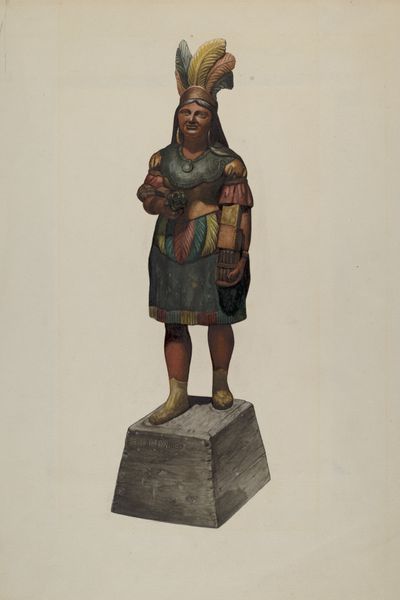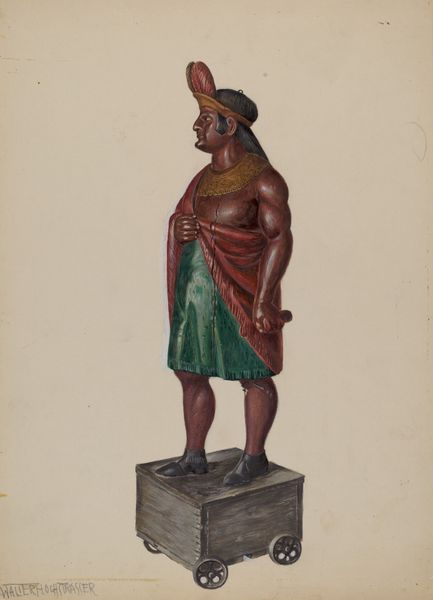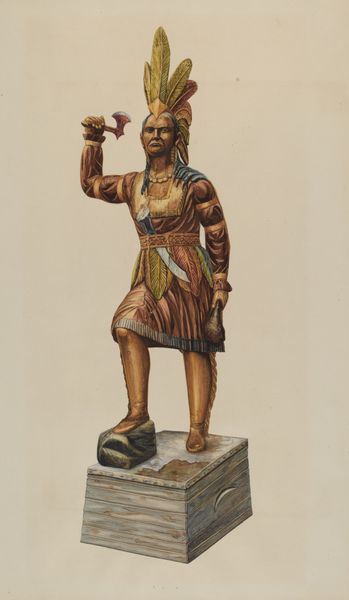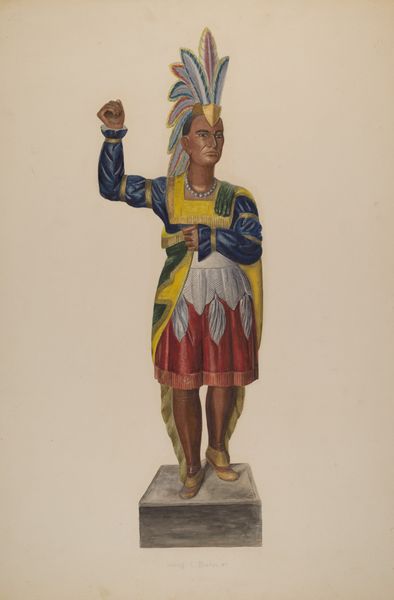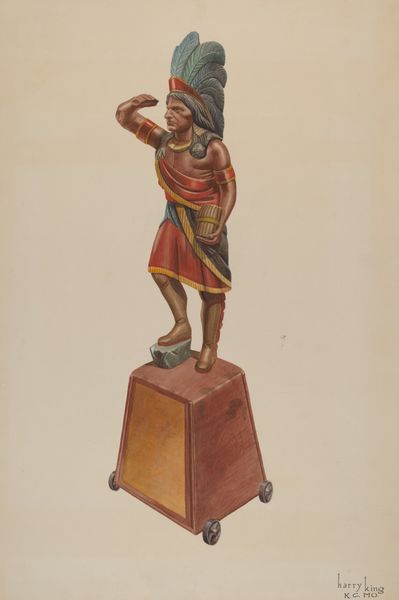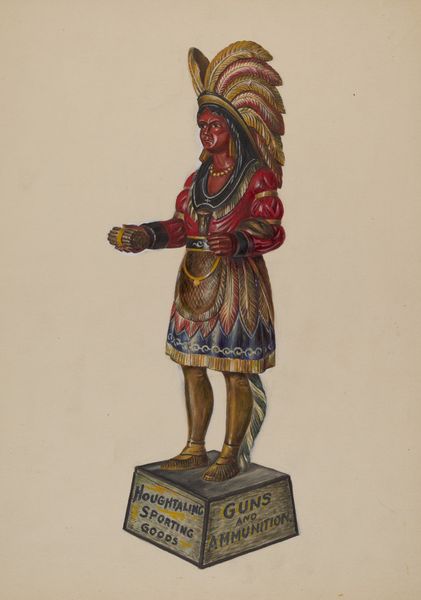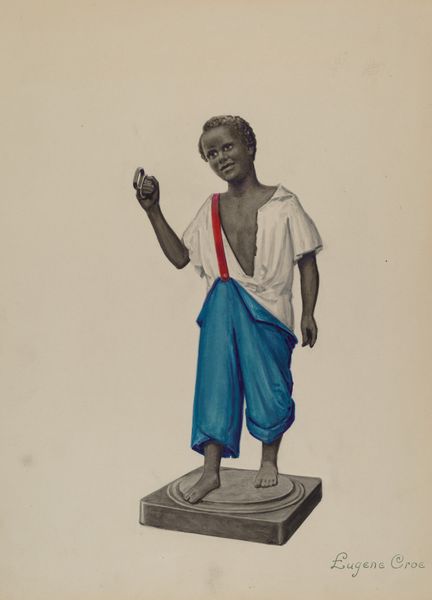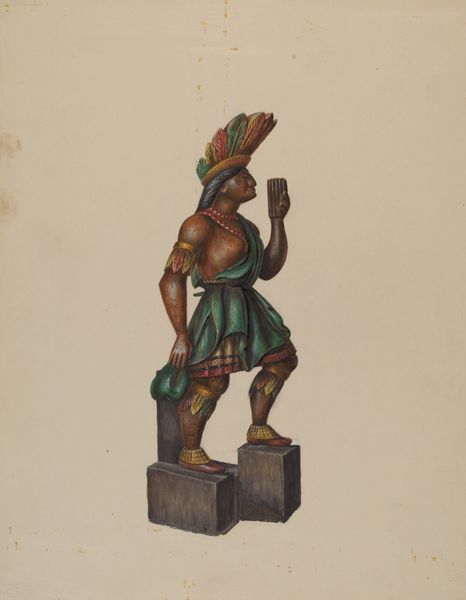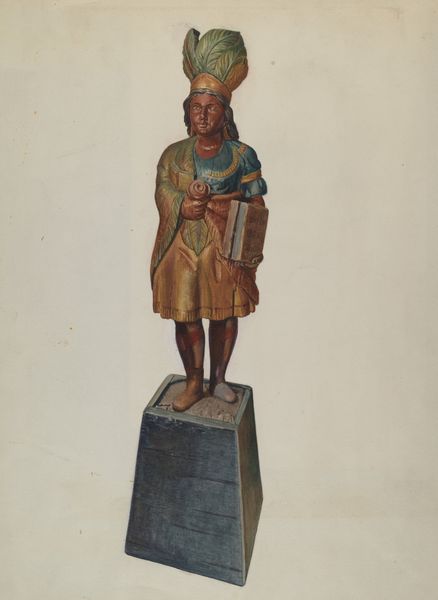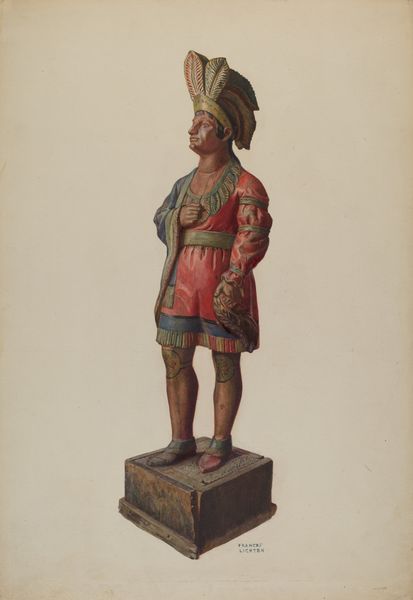
drawing, mixed-media, painting
#
portrait
#
drawing
#
mixed-media
#
painting
#
charcoal drawing
#
figuration
#
folk-art
#
decorative-art
#
realism
Dimensions: overall: 50.9 x 35.9 cm (20 1/16 x 14 1/8 in.)
Copyright: National Gallery of Art: CC0 1.0
Curator: Standing before us is "Cigar Store Indian," a mixed-media artwork created around 1938 by Beverly Chichester. Editor: My initial response is… complicated. There's an unsettling stillness in this depiction. Even as a drawing, it is immediately weighed down with its legacy and association with commerce and a complicated racial history. Curator: The "cigar store Indian" is an archetype steeped in the visual language of American commerce, its cultural symbolism a narrative of appropriation, shaped by historical context. The artist attempts to grapple with cultural depictions by choosing to render this sculpture through mixed media on paper, in doing so prompting the audience to reckon with the subject as something seen and known but not inherently real or factual. Editor: Exactly. And it's crucial to dissect that appropriation. The statue itself, even in rendered form, represents the romanticized yet deeply disrespectful stereotype of indigenous peoples utilized to attract customers. Curator: The statue becomes an emblem. Think about its posture and accoutrements – what emotional narrative does this visual grammar suggest? Is there continuity between these manufactured archetypes and our cultural memory? Editor: Absolutely, and we need to question the emotional and cultural weight it carries. While some might see nostalgia or Americana, others rightfully perceive a painful symbol of colonialism and exploitation, specifically in service of advertising a very dangerous product. How might that intersect with other exploitations? Curator: A visual paradox emerges: the cigar store Indian ostensibly "represents" Native Americans, while fundamentally being in service to a commercial narrative completely outside that group's control or influence. In this case, the icon has a fractured sense of purpose and only stands to exploit in this position. Editor: Yes! The gesture feels simultaneously powerful, or perhaps cautionary, and tragically limited by its very placement on that advertising plinth, almost a caricature with the feathers. Its entire existence is tethered to consumerism, obscuring any authentic cultural expression. What would happen if it were unchained? Curator: It’s a difficult reckoning when reflecting on folk art practices – it presents the audience a challenge: how do we, informed by a modern lens, address these difficult cultural artifacts? Do they carry any significance divorced from a dark past? Editor: By examining its original purpose and cultural context, maybe we can understand the psychological dimensions of these artifacts, using their images as a framework for reevaluating issues like indigenous rights and racial equality, giving meaning to otherwise silent statues.
Comments
No comments
Be the first to comment and join the conversation on the ultimate creative platform.
